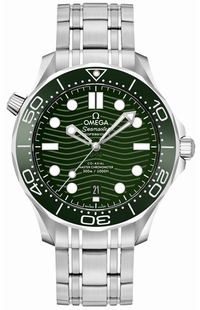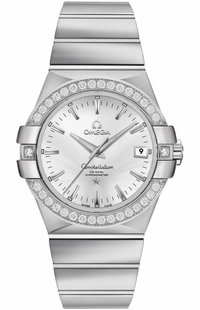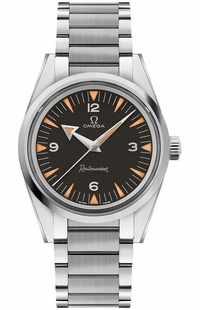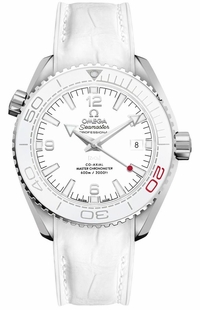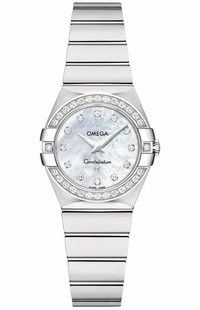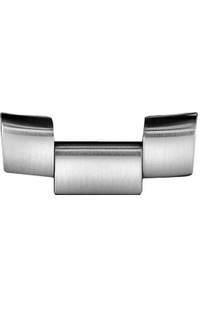Omega Watches
The Start of a Legacy
The company, which would come to be known as Omega, was born in 1854. A then 23-year-old Louis Brandt opened a small workshop in La Chaux-de-Fonds, a small village in Switzerland. He quickly gained acclaim for the precision timepieces he crafted, but the brand took its biggest leap when the company was taken over in 1894 by his sons Louis-Paul and Cesar. In 1880, the company was named Louis Brandt & Fils, and relocated to Biel/Bienne, Switzerland. Eventually the company settled at 96 Rue Jakob-Stampfli, which still serves as the Omega’s headquarters today. In 1894, the 19-ligne caliber movement was invented, which was extremely accurate and modular, allowing for individual components to be repaired and replaced. So revolutionary was this innovation that it became the standard for all watchmaking. Not to stop there, the brothers also birthed the concept and production of a single crown and stem for use in winding and setting the time. These revolutions inspired Loius-Paul and Cesar Brandt to rename their brand Omega Watch Company, which gained global acclaim at the turn of the century when it won the Grand Prize at the 1900 Universal Exposition in Paris. With exponential growth, the company that started as a small watch shop had a presence in 6 continents by 1909.
Revolutionizing Watchmaking
The advent of the 19-ligne caliber movement in 1894 was just the beginning. Set on perfecting form and function, a series of revolutionary innovations followed throughout the decades. In 1925, Omega introduced several timepieces in the birthplace of Art Deco, the International Exhibition of Modern Decorative and Industrial Arts (Exposition Internationale des Arts Décoratifs et Industriels Modernes), where it was awarded the grand prize for its breakthrough designs. The 1930s saw a series of innovations from a sealed case for diving, a centered second hand, and leapt ahead of the competition with shock-resistant and antimagnetic watches. These innovations resulted in Omega watches being widely used by British and Allied armed forces throughout World War II. In 1947, Omega produced the world’s first Tourbillion watch. In 1948 they followed this with another groundbreaking invention, the photoelectric cells, ushering in a new era of electronic timekeeping. In 1974, Omega introduced the MegaQuartz, a revolution in precision for electronic timekeeping. In 1999, Omega invented the co-axial escapement, a leap in innovations that now powers all Omega automatic watches. The co-axial escapement uses smaller surfaces and thus requires less lubrication. It also undergoes less friction with the benefit of longer lasting performance and a higher degree of reliability. Click here (https://www.authenticwatches.com/watch-accuracy.html) for more information on watch accuracy. In 2008, Omega introduced the Si14 balance spring, with a superior resistance to magnetism, which significantly improved the chronometric stability of the movement. To further reduce magnetic influence in today’s electro saturated world, Omega revealed the co-axial 8503 movement in 2013. Prior to this, other “magnetism resistant” movements were resistant to about 1,000 gauss; the Omega co-axial 8503 fortified the movement to be resistant to 15,000 gauss. All of these inventions and the unrivaled precision of Omega created a unique problem: the highest standards of rating watches were not as good as the watches Omega was producing. In 2015, a new watch certification process had to be established by the Swiss Federal Institute of Metrology (METS). Omega released the Omega Master Chronometer, which had a more strict series of tests and standards by the COSC than the previously highest set of Chronometer standards. Information on automatic watch movements can be found below: https://www.authenticwatches.com/watch-movements.html
The Standard of Champions
Omega’s legacy as the timekeeper for sports began in 1905 when Omega was selected as the official timekeeper for 16 sporting events. With being tasked the coveted roll of timekeeper of the Gordon Bennett Cup in 1909, the popularity and demand for Omega watches soared on a global scale. In 1932, Omega was selected as the official timekeeper of the Olympic Games and has remained so through the present day. With the endorsements and ambassadorships of legendary athletes such as Michael Phelps, Omega solidified its position as the global timekeeping standard. Omega also partnered with the PGA, setting itself in the world of professional golf. In commemoration of its achievements, Omega has several special series of timepieces commemorating the Olympic games with the Omega Seamaster and the Omega Speedmaster watches.
From the Sea to the Sea of Tranquility
Having created and built on its invention of a double sealed water-resistant watch in 1932, Omega perfected several other aspects of durability, gaining acclaim and widespread use among members of the military. The innovations and experiences gained, culminated in the production of the Omega Seamaster in 1948. Still in use today, the Omega Seamaster has several subseries, such as the Seamaster Planet Ocean, the Seamaster Aqua Terra, and the Seamaster Ploprof. In 2019, a new world record dive was set by Victor Vescovo when he piloted his submersible to the bottom of the 10,295m deep Mariana Trench. He was sporting an Omega Seamaster Planet Ocean Ultra Deep Professional diving watch. Not content with the bounds of Earth, Omega’s reach extends beyond the sky and low-earth orbit. In 1965, NASA approved the Omega Speedmaster timepiece for spaceflight. The world-renowned Omega Speedmaster series of watches have ventured out as far from our pale blue dot as any human. In 1969, Buzz Aldrin climbed down the steps of the Eagle and became the second man to set foot on the lunar surface. Sporting an Omega Speedmaster with an extra long strap to fit over his space suit, Buzz Aldrin explored Mare Tranquillitatis along with Neil Armstrong during the Apollo 11 mission. Subsequent missions brought more Omega Speedmaster watches to the moon, ending in 1972 with Apollo 17’s Command Module Pilot, who brought his officially issued, as well as his own, personal Speedmaster on board for the longest lunar spaceflight in history. Omega also partnered with Solar Impulse, contributing technology to the success of the world’s first flight around the world powered only by solar energy. It was this partnership that led to the production of the Omega X-33 Skywalker watch, which is still in use today as part of the SpaceX Crew Dragon. To further our knowledge and admiration for our shared world, Omega produced the eco-documentary “Planet Ocean” in 2012. In addition, to further educate and inspire upcoming generations, Omega opened a new museum which pays homage to its legacy in women’s watchmaking, lunar spaceflight, and ocean preservation and exploration.
Bond, James Bond
Omega has traversed the depths of the Earth to the farthest reach of mankind’s exploratory endeavors. Not to be bound by the reaches of the finite, Omega watches dominated the big screen by adorning the wrist of countless James Bond characters throughout history. No watch could be more fitting for James Bond who is, after all, a Navy Commander. Linda Hemming, the Oscar-winning costume designer who first chose the watch for James Bond in Golden Eye, said that “…Commander Bond, a naval man, a diver and a discreet gentleman of the world would wear the Seamaster…” Not content with simply featuring existing watches in films, Omega created a host of new models of timepieces for the various James Bond films, including the Omega Seamaster Aqua Terra Skyfall, The Omega Seamaster 300 SPECTRE, The James Bond 50th Anniversary Seamaster, and the Omega Seamaster Planet Ocean Quantum of Solace.
One Brand, Many Styles
Omega has been creative from its inception, and its spark of ingenuity is not limited to the inner workings of horology. Omega comprises a series of styles and functions tailored to any range of necessities and preferences. The iconic Omega Seamaster, Omega Speedmaster, Omega Deville, Omega Constellation, and other series are each designed and manufactured with the highest standards of excellence. Omega also revolutionized the options of style available for timepieces with its collection of Omega NATO straps. With options available to fit most models, the Omega NATO strap collection will transform the look of any timepiece with a bold accessory that stands above the rest. From the rugged sportiness of the Omega Seamaster Planet Ocean to the timeless elegance of the Omega Ladymatic, Omega is the embodiment of a dedication to excellence.
